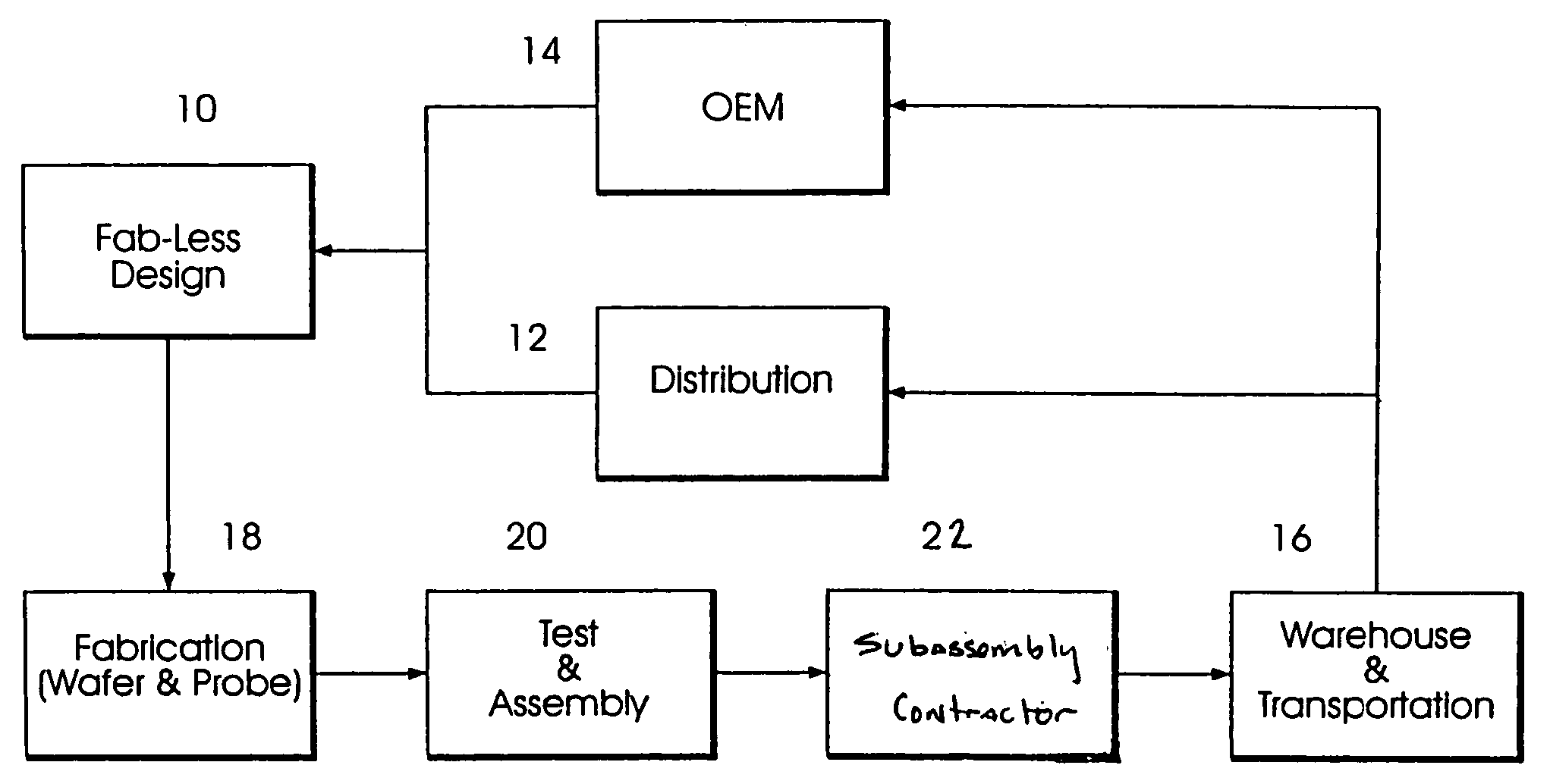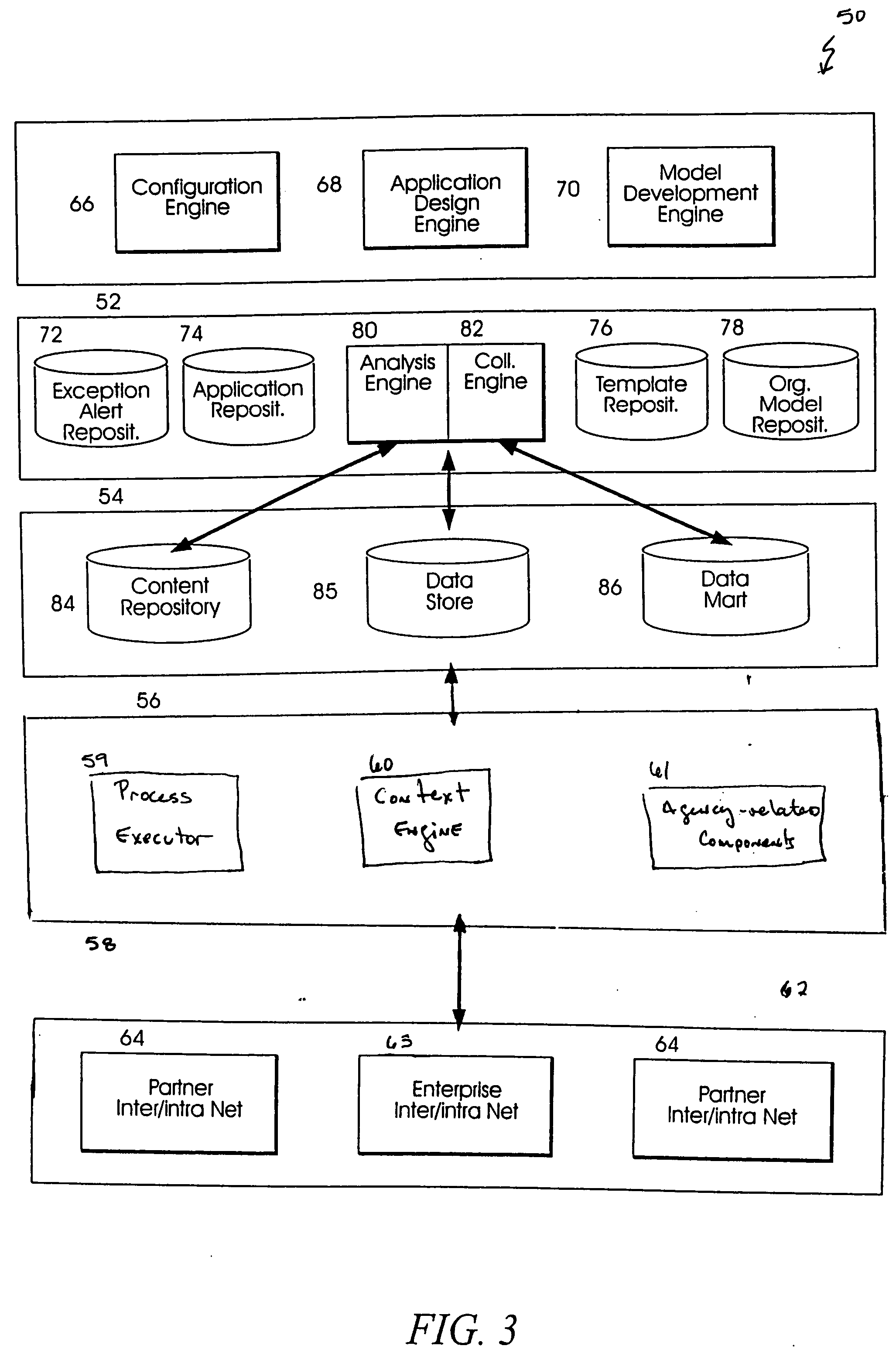Decision support system for supply chain management
a technology of supply chain management and support system, which is applied in the field of decision support system for supply chain management, can solve the problems of large inventory of parts and finished goods, increased costs of loss and damage, and large inventory space for scheduled manufacturing processes, so as to eliminate or reduce disadvantages and problems
- Summary
- Abstract
- Description
- Claims
- Application Information
AI Technical Summary
Benefits of technology
Problems solved by technology
Method used
Image
Examples
Embodiment Construction
[0033] In the contemporary business world, a user population enters volumes of data into transaction systems. These volumes of data then go into at least one planning system. Often, the volumes of data may be dispersed into a plurality of planning systems within an organization, shared with external suppliers or users, and / or both. The responses to the data may then be fed back into transactions systems for decision support. This process of sequentially accessing, transferring and moving data is very disjointed, heavily relying upon users to evaluate data through reports in order to make effective decisions. The decision support system disclosed herein can be characterized as a system and methodology for allowing companies to operate their entire business decision making processes on an exception basis, and to offer individual users the ability to characterize problems and address a large proportion of those decisions themselves. Further, the decision system automates the process of...
PUM
 Login to View More
Login to View More Abstract
Description
Claims
Application Information
 Login to View More
Login to View More - R&D
- Intellectual Property
- Life Sciences
- Materials
- Tech Scout
- Unparalleled Data Quality
- Higher Quality Content
- 60% Fewer Hallucinations
Browse by: Latest US Patents, China's latest patents, Technical Efficacy Thesaurus, Application Domain, Technology Topic, Popular Technical Reports.
© 2025 PatSnap. All rights reserved.Legal|Privacy policy|Modern Slavery Act Transparency Statement|Sitemap|About US| Contact US: help@patsnap.com



